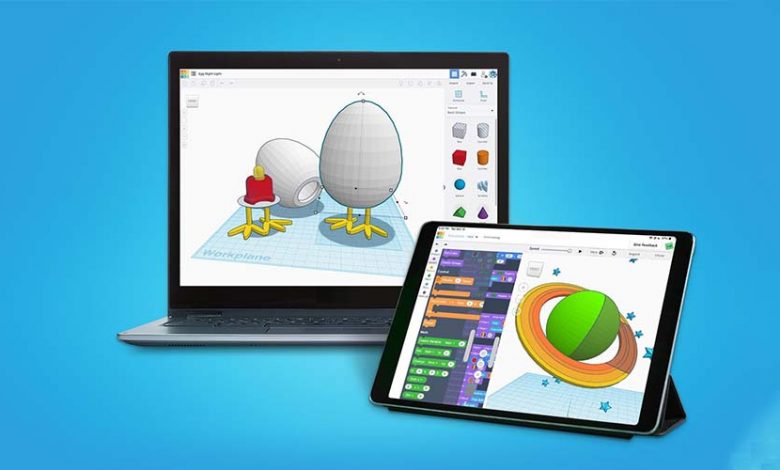
Tinkercad is developed online software that is owned by Autodesk and allows beginners to create 3D models. This CAD software is based on solid construction geometry (a branch of solid modeling) which allows users to create complex models by combining simpler objects. It is therefore a very easy-to-learn modeling solution, particularly appreciated by teachers, children, beginners and designers. In addition, it is free software that will only require internet access. It allows you to create models compatible with 3D printing which can be a good option when you start.
Tinkercad is indeed a good alternative to other 3D modeling software such as SketchUp or Fusion360 – another solution from Autodesk – if you don’t need the more advanced options of these solutions. Autodesk acquired Tinkercad in 2013, two years after its launch by Kai Backman, former engineer at Google, and Mikko Mononen. The main advantage of Tinkercad over these two software is that it is free, while offering more modeling freedom than you might think at first glance! It is now available in 16 languages.

Add different basic shapes to your 3D model
What are the main features of Tinkercad?
While Tinkercad is perfect for beginners, that doesn’t mean those more experienced in 3D modeling won’t appreciate this software. Since it is based on the construction geometry of solids to create models, you can always make it more complex by adding other shapes. Concretely, all you have to do is select one of the available shapes, add or remove material, and voila! You can start from a cylinder for example and then add triangles, circles, cones, etc. The shape can be moved, rotated, to visualize all the angles.
In addition, the software allows you to add electronic circuits to 3D models in order to create objects with light and movement. The end result can even be simulated in software to check how the components will react in real life. Another feature of Tinkercad is its ability to turn a 3D design into a buildable brick model, just like you’re playing Lego. Finally, for those who love Minecraft, you will be served, because you will be able to make creations compatible with the application.
Tinkercad can therefore be used for a whole range of applications, including electronics and 3D printing. 3D models can be saved in three different formats, STL, OBJ and SVG. Once you have the STL file of your model, you can move on to using slicing software. This converts the 3D model into a series of thin layers and produces a G-code file with instructions suitable for a specific type of printer. In other words, it splits the object into a stack of flat layers and describes those layers as the linear movements of the 3D printer extruder. If you do not have a 3D printer, you can also order your model through the online service offered by Tinkercad. Also note that it can be exported in SVG format for laser cutting.

Tinkercad relies on solid construction geometry
The 35 million users often compliment the intuitiveness of this CAD software. Transforming, duplicating and modifying shapes are easy to grasp. In addition, Autodesk has made many resources available to its community. For example, you will find inspiration, tips and tricks to get started on their blog, as well as videos but also courses to get your 3D modeling off to a good start! The software works on any computer with an internet connection, you just have to create your account. It also offers a backup of 3D models in the cloud. You can find more information HERE.
Are you using Tinkercad? What do you think of this 3D software? Share your opinion in the comments of the article or with members of the 3Dnatives forum. Find all of our videos on our YouTube channel or follow us on Facebook or Twitter!